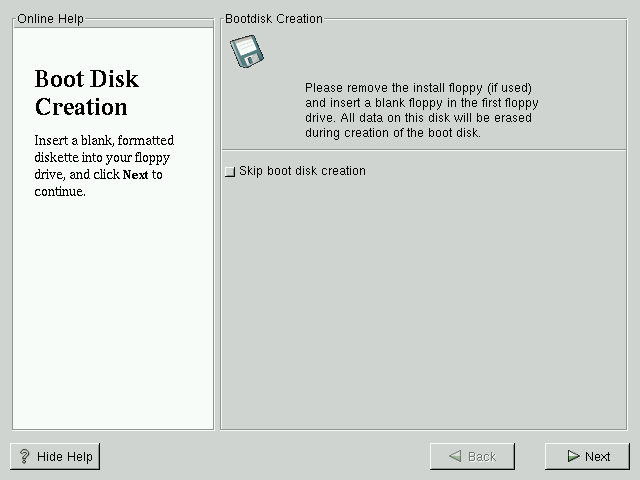Boot Disk Creation
A boot disk can be handy in several situations, including:
For use when another operating system overwrites LILO[1] -- Other operating systems may not be as flexible as Red Hat Linux when it comes to supported boot methods. Quite often, installing or updating another operating system can cause the master boot record (originally containing LILO) to be overwritten, making it impossible to boot your Red Hat Linux installation. The boot disk can then be used to boot Red Hat Linux so you can reinstall LILO.
To create a boot disk, you should now insert a blank, formatted diskette into your floppy drive (see Figure 5-23).
After a short delay, your boot disk will be created; remove it from your floppy drive and label it clearly. Note that if you would like to create a boot disk after the installation, you'll be able to do so. For more information, please see the mkbootdisk man page, by typing man mkbootdisk at the shell prompt.
If you make changes to your kernel, and you boot your system with the boot disk (instead of LILO), make sure you create a new boot disk.
